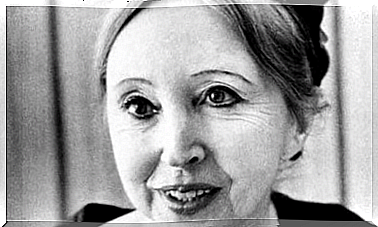Panic Attacks: A Disease That Feeds On Our Lifestyle

Panic attacks represent a “silent epidemic” that is spreading at great speed in our society. Accentuated by stress and experiences that have not been assimilated and / or adequately transformed – because in our society, there is no time for that-, they are unfortunately more and more frequent, and less and less. less treated in consultation. In fact, the person tends to consult when they become truly incapacitating, and not when they are only partial.
Symptoms of a panic attack include: sweating, tachycardia or strong palpitations, feeling unreal, tremors, choking, heat or chills, and fear of dying, among others. We can therefore see that she physiologically presents recurring symptoms associated with anxiety disorders, even if the trigger is not clear and the anticipation of the crisis may simply be that trigger.
According to the World Health Organization (WHO), three in ten people suffer from panic attacks. This means that around 30% of human beings are affected by this disease. The WHO estimates that nearly 6 million people consult each year for one or more symptoms of panic, of which 1 million have full symptoms and are undergoing treatment.
This symptom is relatively new. Until 1980, it was classified as an evil of identity. This is after thousands of mental health professionals around the world have reported that the number of patients consulting for sudden attacks of terror is increasing dramatically. These patients did not enter into the symptomatology of anxiety and that is why it was called a “panic attack”.
Panic, a startling experience
The worst thing about “modern panic” is the fact that it presents itself in a totally arbitrary way and that it dissipates in the same way. A person may walk quietly down the street and suddenly feel the symptoms of a heart attack or a “lightning” experience. It is as if she is staring death in the face. In fact, in most cases, she feels like she is going through a moment that can lead to a fatal outcome.

The first difficulty arises if the person does not know the definition of a panic attack. She will surely think it is a physical illness. Often, she will start by consulting several doctors, without any of them finding the reason for the illness that is eating her away.
The situation then becomes very distressing. The person thinks they are sick when the doctors cannot detect anything. She feels abandoned in her suffering. In general, his life changes. She begins to be afraid of going out on the streets, or of being alone in a place.
She fears that the symptoms will appear again and that there will be no one there to “save” and help her under the circumstances. It also “breeds” for strong feelings of sadness and frustration.
Understanding contemporary panic
Panic is a symptom that many people can experience. Sometimes we have one or two attacks, and it never comes back. Other times, the attacks are recurrent and this is where we can say that they are part of an anxiety disorder itself. It is always accompanied by large doses of anxiety, given the sudden appearance of the symptoms and the difficulty in finding the causes.
Most disconcerting is that several studies have found that the type of personality prone to suffer from panic attacks is usually that of people who have gone through complex episodes and difficulties in their life, and have always kept them in control. .
They are people who tend to solve problems and move forward despite difficulties. This is why when panic arises, they cannot accept that something is getting out of their hands, out of their control. It is very difficult for them to admit that what is happening is coming from their mind and not from their body.

And most see a mental health professional after several years of battling these symptoms, which is particularly harmful for them. They do so after having met a host of general and specialized doctors, but not in the field of mental health, who have not been able to provide them with an answer.
As panic transforms their lives, they develop other issues like depression, lack of confidence, irritability and constant worry. It also causes new problems with oneself and those around them, and by the time treatment is started, the symptoms are already quite entangled.
It is believed that panic attacks only occur in people who live in large cities, but this is not true. Although it is admittedly more common in urban environments, people who only work in cities but live in the countryside are also at risk.
Currents of psychology assert that the appearance of panic does not arise in itself from a context but from an experience or a latent conflict, repressed within and which has not been resolved. Hence the importance of formal psychotherapy to tackle this very complex situation.








